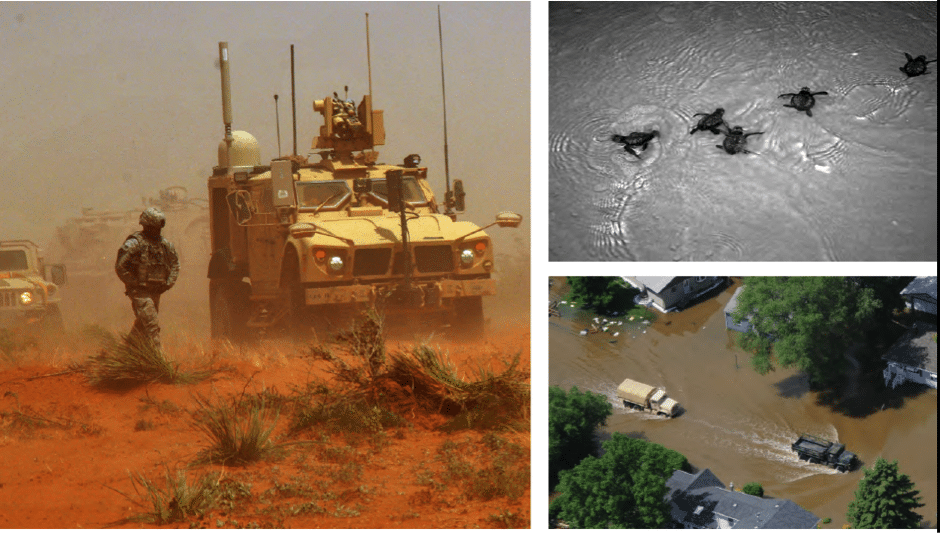‘The responsibility of the Department of Defense is the security of our country’ and the DoD is very aware of the fact that the threat of climate change will impact the way they do things and the stability of their systems and processes.
WHY YOU SHOULD TAKE A LOOK
Because it’s a relief to see some straight talking and truth-telling about climate change from the U.S. Federal Government. With all the denialists in congress making leadership on climate almost impossible, it’s nice to see the DoD say in their 2014 Climate Change Adaptation Roadmap ‘within the U.S. Government, DoD stands ready to support other agencies that will take the lead in preparing to for these challenges’.
KEY TAKEAWAYS
The adaptation plan has three key goals:
1. Identify and assess the effects of climate change on the Department of Defense (low lying naval bases, food security in drought prone areas, etc).
2. Integrate climate change considerations across the Department and manage associated risks (thinking about building the new naval base on higher ground, focusing procurement towards renewable energy to get off oil, etc.)
3. Collaborate with internal and external stakeholders on climate change challenges (with departments like FEMA, the State Department, and International Development Agency)
To do this, they will assess their plans and operations, training and testing programs, built and natural infrastructure, and supply chains to make sure all elements of their day to day operations are ready for climate change.
Plans and operations
– Increased demand for disaster relief
– Need for greater capabilities in the Arctic region
– A constrained environment for military operations from extreme weather
– Instability among and within other nations
Training and testing
– Increased number of fire hazard and suspended outdoor training days
– Loss of training and testing land due to climate change
– Increased dust in training that could affect people and sensitive equipment
– Stressed, threatened and endangered species and ecosystems on DoD land
– Increased health risks to personnel
– Increased repairs and maintenance for infrastructure and equipment
Built and natural infrastructure
– Increased inundation and flooding
– Changing of building heat and cooling demands
– Disruption to reliable fresh water and energy supplies
– Damage from thawing permafrost in the Arctic and Alaska
– Increased land and species management challenges
– Increased maintenance for runways and roads in extreme heat
– Changed disease distributions increasing complexity and cost of management
Acquisition and supply chain
– Changed operational parameters for weapons and equipment
– Reduced availability of materials and resources
– Interrupted shipment, delivery, storage/stockpile of materials and supplies
– Alterations in storage and stockpile activities
– Reduced or changed availability and access to food and water supplies
image from report (c) Department of Defense


